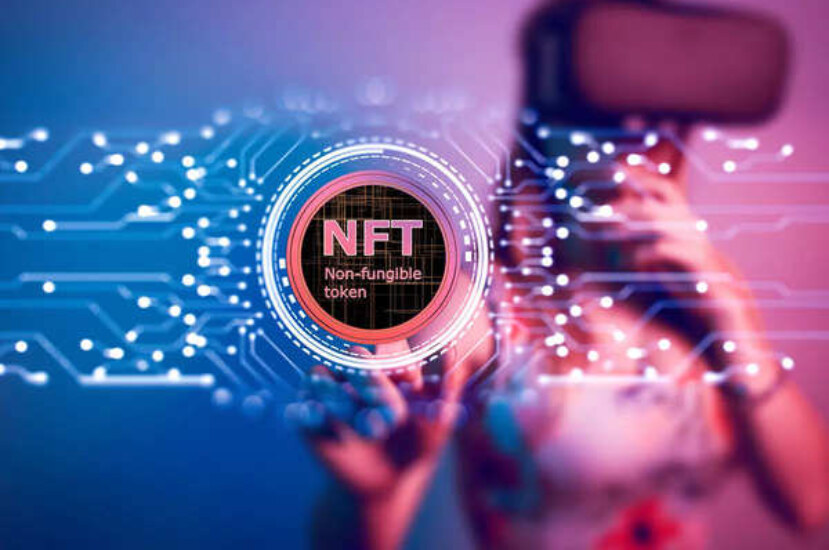This year, non-fungible tokens (NFTs) appear to have exploded from the ether. Digital assets ranging from art and music to tacos and toilet paper are selling like 17th-century unique Dutch tulips, with some fetching millions of dollars.
Is it worth the money—or the hype—to invest in NFTs? Like dot-com fever and Beanie Babies, some analysts predict they are about to bust. Others believe that NFTs are here to stay and will forever change the way people invest.
What Is an NFT?
An NFT is a digital asset that is used to represent real-world artifacts such as art, music, in-game items, and films. They are frequently encoded with the same underlying software as many other cryptos and are purchased and traded online, frequently using bitcoin.
Despite the fact that they’ve been around since 2014, NFTs are becoming more popular as a way to buy and trade digital art. Since November 2017, a whopping $174 million has been spent on NFTs.
NFTs are usually one-of-a-kind, or at the very least limited-edition, and feature unique identification numbers. “Essentially, NFTs generate digital scarcity,” explains Arry Yu, managing director of Yellow Umbrella Ventures and chair of the Washington Technology Industry Association Cascadia Blockchain Council.
In contrast, the great bulk of digital things is almost always available in infinite amounts. If a certain asset is in high demand, reducing supply should potentially raise its value.
Many NFTs, on the other hand, have been digital works that already exist in some form elsewhere, such as iconic NBA video clips or securitized copies of digital art that are already circulating on Instagram, at least in these early days.
For example, acclaimed digital artist Mike Winklemann, better known as “Beeple,” created “Every day: The First 5000 Days,” possibly the most famous NFT of the moment, which sold at Christie’s for a record-breaking $69.3 million.
Individual images non-fungible token is abbreviated as NFT. It’s usually programmed in the same way as cryptocurrencies like Bitcoin or Ethereum are, but the similarities end there.
—or even the entire collage—can be viewed online for free. So, why are people willing to spend millions of dollars on something that might be easily screenshotted or downloaded?
Because the buyer can own the original item with an NFT. It also comes with built-in authentication, which acts as proof of ownership. Collectors prize the “digital bragging rights” almost as much as the item itself.
How Is an NFT Different from Cryptocurrency?
Physical money and cryptocurrencies are both fungible, which means they may be traded or exchanged for one another. One dollar is always worth another dollar and one Bitcoin is always worth another Bitcoin in terms of value. The fungibility of cryptocurrency makes it a secure way to execute blockchain transactions.
NFTs are distinct. Each contains a digital signature that prevents NFTs from being substituted for or compared to one another (hence, non-fungible). Simply because they’re both NFTs, one NBA Top Shot clip isn’t the same as every day. (For that matter, one NBA Top Shot footage isn’t necessarily equal to another NBA Top Shot clip.)
How Does an NFT Work?
NFTs are stored on a blockchain, which is a decentralized public ledger that keeps track of transactions. Most people are familiar with blockchain as the underlying technology that allows cryptocurrencies to exist.
NFTs are commonly held on the Ethereum blockchain, but they can also be held on other blockchains.
An NFT is made up of digital objects that represent both tangible and immaterial objects, such as:
- Art
- GIFs
- Videos and sports highlights
- Collectibles
- Virtual avatars and video game skins
- Designer sneakers
- Music
Even tweets are taken into account. Twitter co-founder Jack Dorsey sold his first tweet for $2.9 million as an NFT.
NFTs are essentially digital replicas of physical collectibles. As a result, the purchaser receives a digital file rather than a real oil painting to hang on the wall.
They are also the only owners. NFTs can only have one owner at any given moment. It’s straightforward to verify ownership and transfer tokens between owners because NFTs provide unique data. They can also be utilized by the owner or author to store special information. Artists, for example, can sign their work by putting their signature in the metadata of an NFT.
What Are NFTs Used For?
Thanks to blockchain technology and NFTs, artists and content creators have a unique opportunity to monetize their work. Artists, for example, are no longer reliant on galleries or auction houses to sell their work. Instead, the artist can sell it as an NFT straight to the consumer, allowing them to keep more of the profit. Additionally, artists can incorporate royalties into their program so that when their work is sold to a new owner, they receive a portion of the proceeds. Because most artists do not receive more proceeds after their first sale, this is a useful feature.
Making money using NFTs isn’t limited to art. To generate money for charity, companies like Charmin and Taco Bell have auctioned off themed NFT art. Taco Bell’s NFT art sold out in minutes, with the highest bids coming in at 1.5 wrapped ether (WETH)—equal to $3,723.83 at the time of writing. Charmin’s offering was called “NFTP” (non-fungible toilet paper), and Taco Bell’s NFT art sold out in minutes.
In February, Nyan Cat, a 2011 GIF depicting a cat with a pop-tart body, sold for nearly $600,000. As of late March, NBA Top Shot had grossed more than $500 million in sales. NFT sold for more than $200,000 for a single LeBron James highlight.
Snoop Dogg, Lindsay Lohan, Amitabh Bachchan, and Salman Khan are among the celebrities who have jumped on the NFT bandwagon, sharing unique memories, artwork, and moments as securitized NFTs.
How to Buy NFTs?
If you want to create your own NFT collection, you’ll need the following supplies:
To begin, you’ll need a digital wallet that can hold both NFTs and cryptocurrencies. You may need to purchase cryptocurrency, such as Ether, depending on what currencies your NFT provider accepts. Coinbase, Kraken, eToro, and even PayPal and Robinhood now accept credit cards for crypto purchases. After that, you can transfer money from the exchange to your chosen wallet.
When researching your alternatives, keep fees in mind. When you acquire crypto, most exchanges charge at least a portion of your transaction.
Popular NFT Marketplaces
There are many NFT sites to choose from once you’ve set up and funded your wallet. The following are the largest NFT marketplaces right now:
- OpenSea.io: is an online marketplace for “rare digital products and collectibles.” Simply create an account and browse the NFT collections to get started. Sort the works by their sales volume to uncover new artists.
- Rarible: is a democratic, open marketplace akin to OpenSea that allows artists and producers to issue and sell NFTs. The platform’s RARI tokens allow users to vote on features such as fees and community regulations.
- : Artists must earn “upvotes” or an invitation from fellow creators to put their work on the foundation. Because of the community’s exclusivity and steep entry fee—artists must also purchase “gas” in order to mint NFTs—it is more likely to draw higher-quality work. Chris Torres, the developer of Nyan Cat, for example, sold the NFT on the Foundation platform. It might also imply higher prices, which isn’t always a bad thing for artists and collectors hoping to profit if demand for NFTs remains constant or even rises over time.
Although these and other platforms are home to hundreds of NFT artists and collectors, do your homework before purchasing. Impersonators have listed and sold some artists’ work without their consent.
Furthermore, the verification methods for creators and NFT listings vary by platform, with some being more strict than others. OpenSea and Rarible, for example, do not require owner identification for NFT ads. Buyer safeguards appear to be limited at best, so keep the old adage “caveat emptor” (let the buyer beware) in mind when purchasing NFTs.
Should You Buy NFTs?
Is it true that you should buy NFTs just because you can? According to Yu, it depends.
“NFTs are risky since their future is uncertain, and we don’t have any historical data to compare them against,” she explains. “Because NFTs are so new, it could be worth trying them out with little dosages for now.”
Investing in NFTs, to put it another way, is ultimately a personal decision. If you have some extra cash, it’s worth considering, especially if the piece has sentimental value for you.
But keep in mind that the value of an NFT is solely determined by what someone else is prepared to pay for it. As a result, rather than fundamental, technical, or economic indicators, which traditionally impact stock prices and, at the very least, constitute the basis for investor demand, demand will drive the price.
As a result, you may be able to resale an NFT for less than you paid for it. If no one wants it, you might not be able to resell it at all.
Remember that NFTs, like the cryptocurrencies used to buy them, may be subject to taxes. Withholding tax on transfers of virtual digital assets, such as NFTs and cryptocurrencies, was suggested in the Indian Budget 2022, and would take effect on July 1. A source tax deduction is also proposed. Because it is unclear how the taxation will work, you should consult a tax advisor before adding NFTs to your portfolio.
Treat NFTs, on the other hand, like any other investment: If you decide to take the plunge, do your homework, be aware of the risks (including the possibility of losing all of your investment rupees), and continue with caution.









